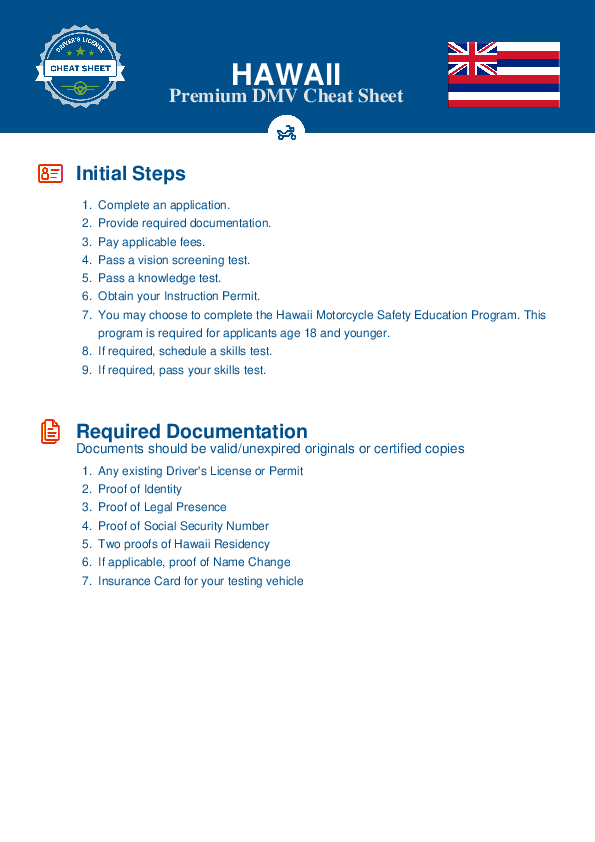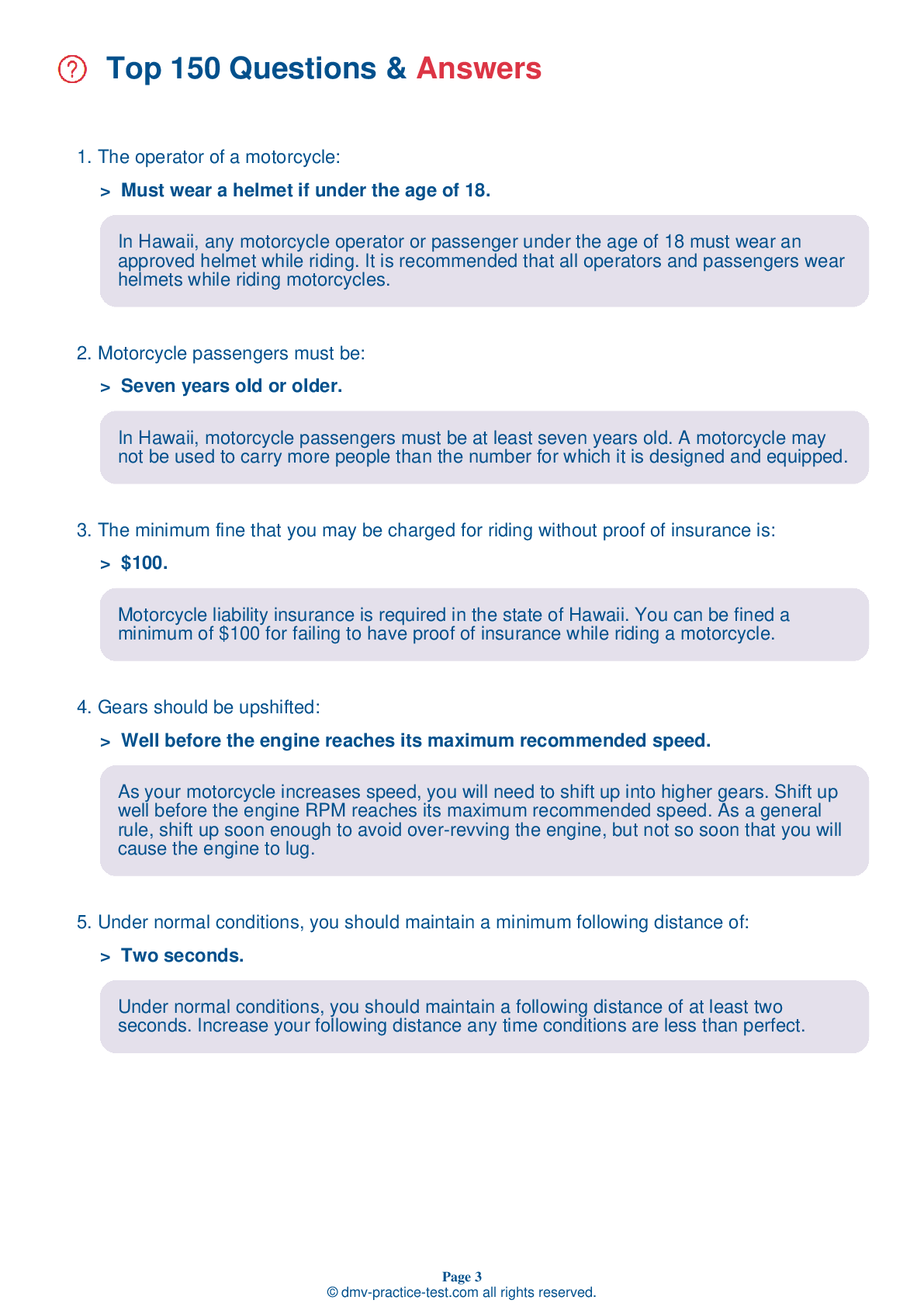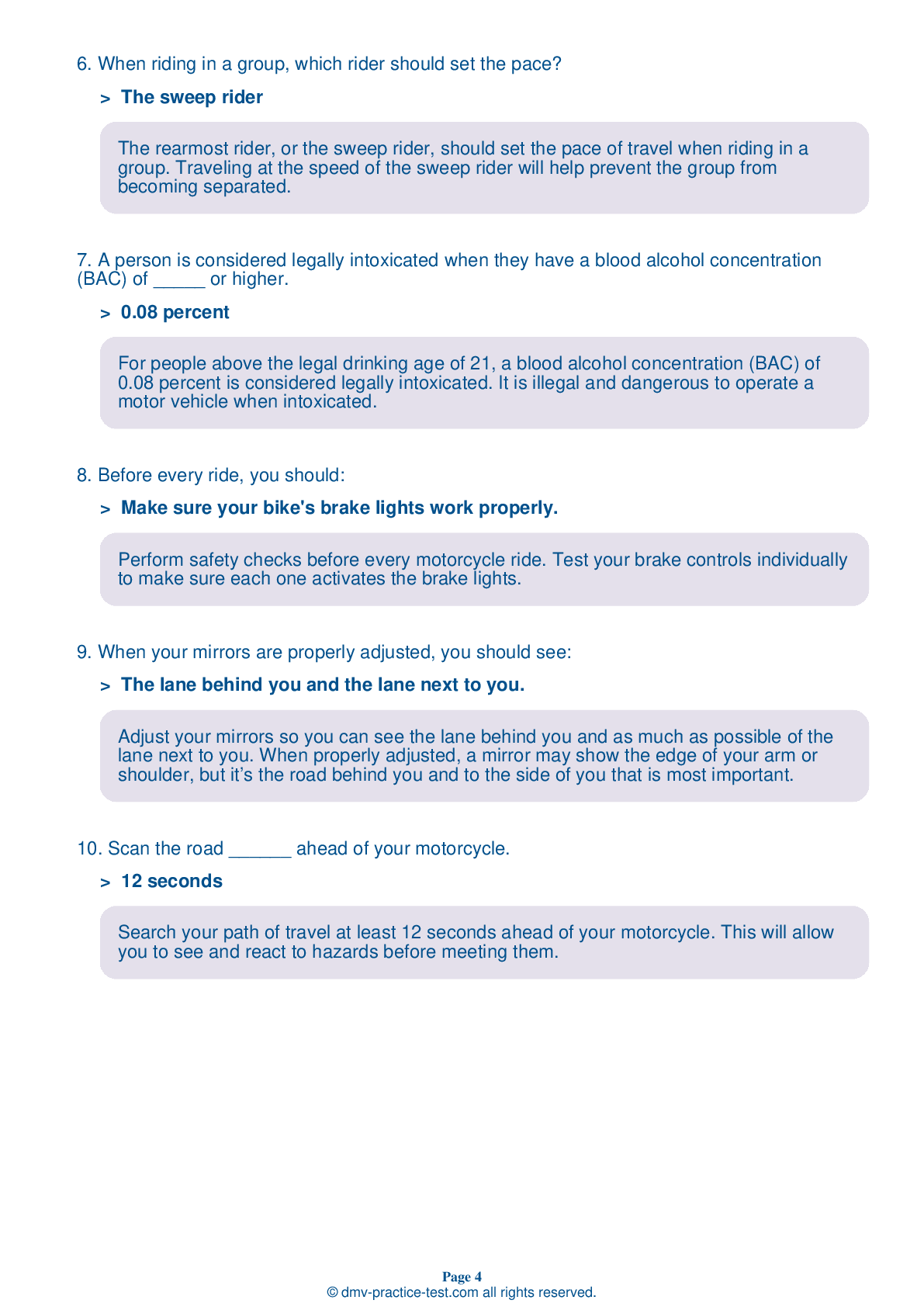Motorcycle Test | License HI 2025 | FREE Online Practice! #16
Take this FREE motorcycle test (license in HI 2025) to check your knowledge of the road rules. To improve your results, download a motorcycle handbook online, study theory, and practice for free on our website. Still worried about how to get a motorcycle license in Hawaii in 2025? Check our website for more sample tests, train as much as possible, and boost your grades!
1 . You should ride with your headlight on:
Riders should use their headlight at all times. An activated headlight is the best way to help other road users see them. During the day, a motorcycle with its headlight on is two times more likely to be noticed than a motorcycle with no headlight.
2 . When a lead rider extends their left arm straight out with their palm facing up before swinging their arm upward, it means:
Hand signals are an important part of communication when riding in groups. When the lead rider extends their left arm straight out with their palm facing up before swinging their arm upward, it means riders should increase their speed.
3 . If you are riding in traffic when a small animal enters your lane, you should:
Do everything you safely can to avoid hitting an animal in the road. If you are in traffic, however, you should remain in your lane. Swerving into another lane of traffic to avoid hitting an animal can cause you to collide with another driver. Hitting something small is less dangerous than hitting something big.
4 . When traveling in heavy traffic, maintain a minimum ______ following distance.
An expanded cushion of space is needed if your motorcycle will take longer than normal to stop. If the pavement is slippery, if you cannot see through the vehicle ahead of you, or if traffic is heavy and another driver may try to squeeze in front of you, open up to a minimum three-second following distance.
5 . When approaching a blind intersection, riders should:
When approaching a blind intersection that is controlled by a stop line or stop sign, you must first stop where indicated. You may then edge forward and stop again just short of where the cross traffic lane meets your lane. From that position, lean your body forward and look around buildings, parked cars, or bushes to see if anything is approaching. Make sure your front wheel stays out of the crossroad while you are looking.
6 . This sign means:

Warning signs prepare drivers for upcoming road conditions and hazards and are usually yellow with black markings. This sign alerts drivers to potential traffic merging from the right. Drivers should prepare to allow the traffic to merge safely.
See the exact questions that will be on the 2025 Hawaii DMV exam.
99.2% of people who use the cheat sheet pass the FIRST TIME
Jeneen was tired of paying $5/gallon. She got herself a scooter that required the motorcycle license. She studyed the motorcycle test cheat sheet and passed her test the next day!
Christopher tells us how he knew nothing prior to obtaining the motorcycle study guide, and he only got one question wrong because he clicked on the wrong answer by mistake.



